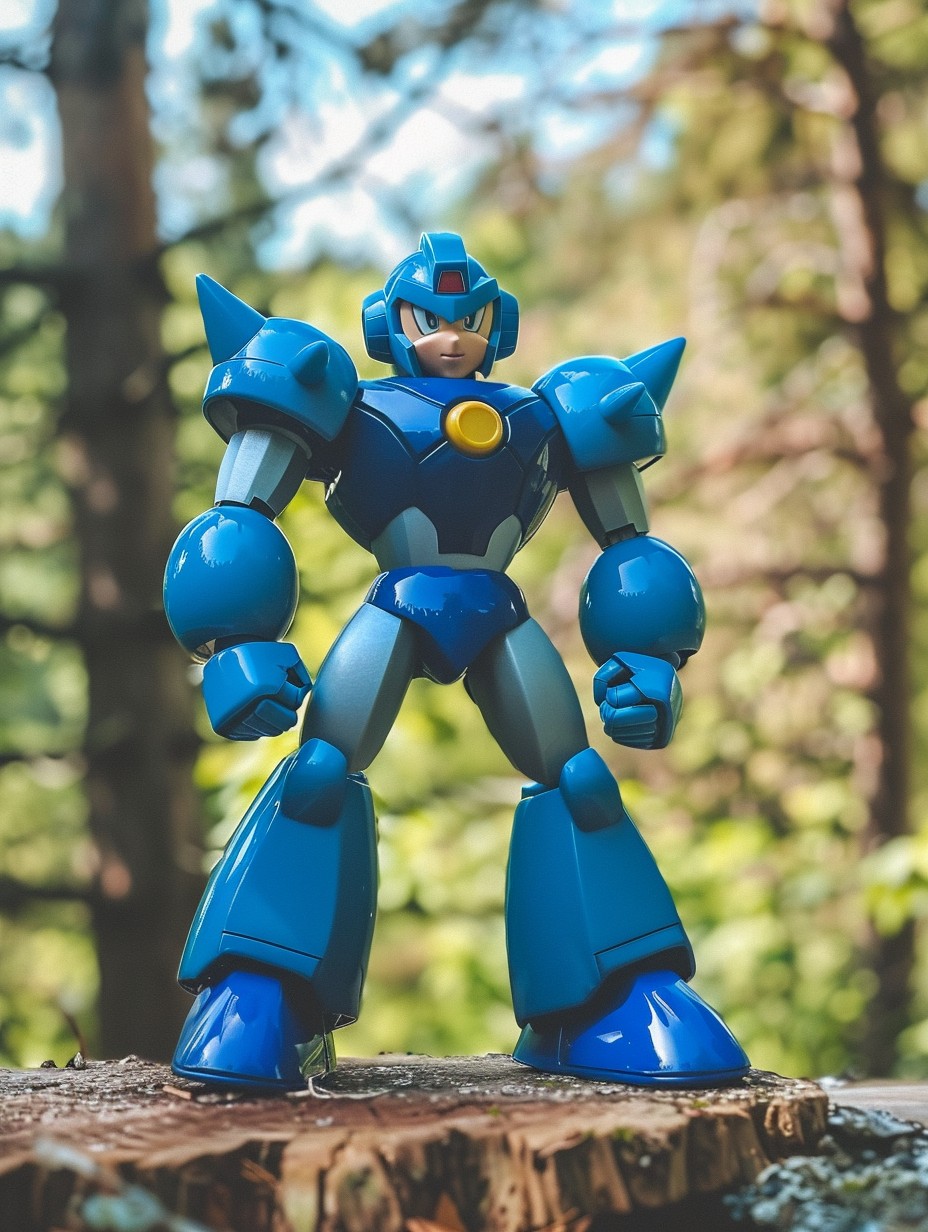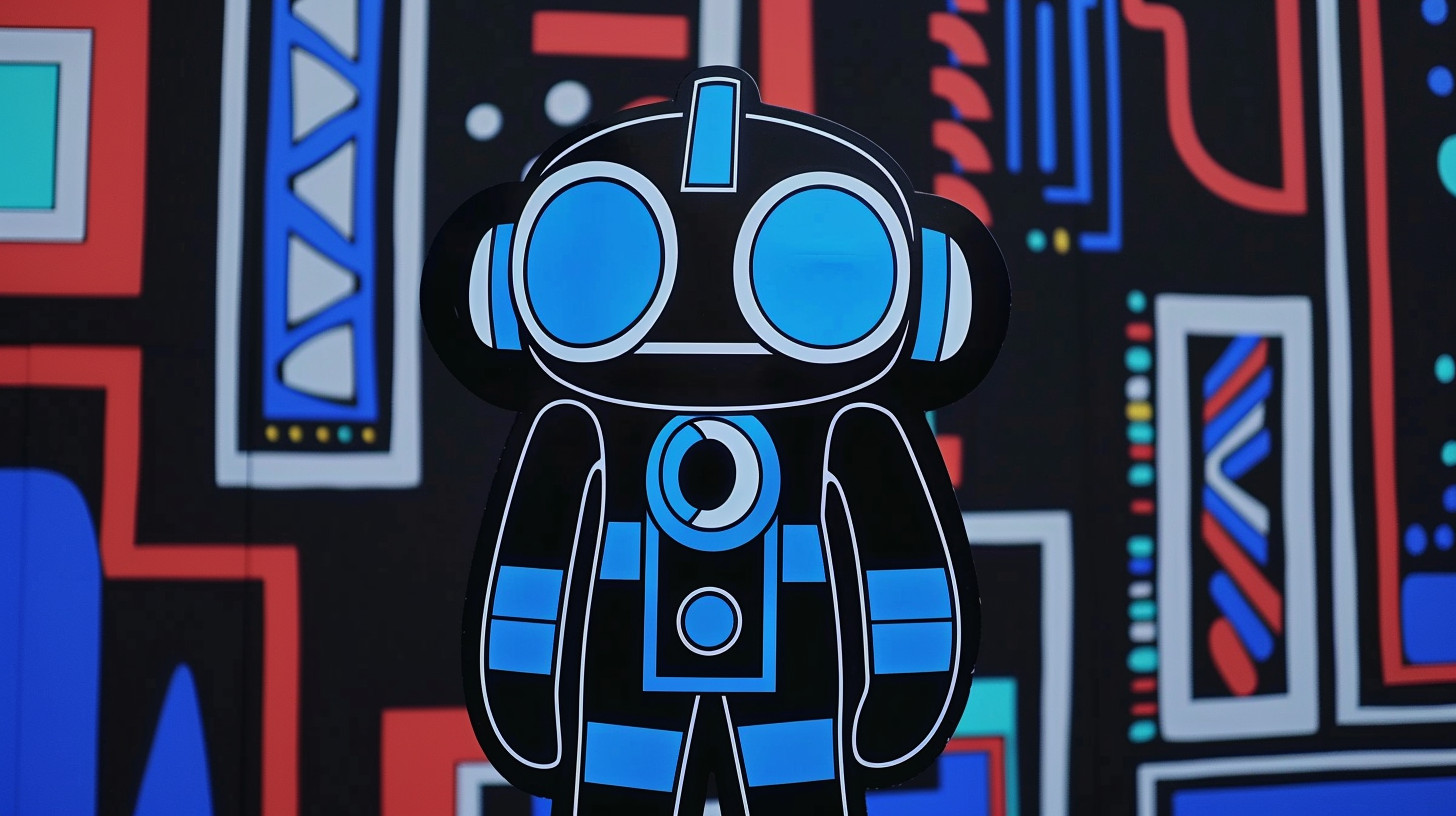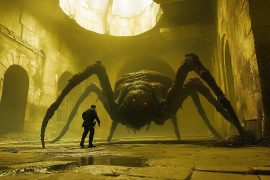 The first time I threw a controller in genuine frustration was summer 1989, specifically at 11:42 PM on a Tuesday night. I know this because my dad burst into the basement, still in his work clothes despite the late hour, demanding to know “what in God’s name that crashing sound was.” The offending projectile had been our family’s second NES controller (already sporting a piece of electrical tape holding the seam together from previous abuse), and the target of my prepubescent rage was the tiny blue robot on our TV screen who had just plummeted down the same pixel-perfect jump for the twenty-seventh consecutive time. Mega Man had claimed another victim, though this time it wasn’t his 8-bit avatar but rather my rapidly deteriorating patience and a controller that would never quite work right again.
The first time I threw a controller in genuine frustration was summer 1989, specifically at 11:42 PM on a Tuesday night. I know this because my dad burst into the basement, still in his work clothes despite the late hour, demanding to know “what in God’s name that crashing sound was.” The offending projectile had been our family’s second NES controller (already sporting a piece of electrical tape holding the seam together from previous abuse), and the target of my prepubescent rage was the tiny blue robot on our TV screen who had just plummeted down the same pixel-perfect jump for the twenty-seventh consecutive time. Mega Man had claimed another victim, though this time it wasn’t his 8-bit avatar but rather my rapidly deteriorating patience and a controller that would never quite work right again.
My introduction to Capcom’s blue bomber came via a weekend rental from our local video store—you know, those magical places where you’d wander aisles of empty boxes before taking your selection to the counter, where they’d retrieve the actual cartridge from behind the counter, as if NES games were somehow equivalent to adult magazines in their need for security. I’d chosen Mega Man 2 based solely on the cover art, which featured what looked like a cool robot with a gun for an arm. Eleven-year-old me had simple criteria: robots good, guns good, therefore robot with gun must be very good.
The game proceeded to hand me my first genuine gaming humiliation. I wasn’t new to video games—I’d conquered Super Mario Bros., vanquished Ganon in The Legend of Zelda, and even made decent progress in the notoriously difficult Ghosts ‘n Goblins. But something about Mega Man 2 was different. It demanded a precision I wasn’t prepared for, a memorization of patterns that bordered on the obsessive, and a strategic approach to boss order that no other game had required.
I didn’t even make it past Air Man that first weekend. My rental period ended with me having barely scratched the surface of the game, but something had awakened in me—not just frustration, but determination. I began saving my allowance, forgoing candy and comic books, until I had enough to purchase my own copy. When I finally brought that sky-blue cartridge home, it was with the solemn vow that this game would not defeat me. (Narrator: The game would, in fact, defeat him many, many times.)
What hooked me about Mega Man wasn’t just the challenge, though that was certainly a factor. It was the innovation of the weapon acquisition system. Beating a Robot Master granted you their weapon, fundamentally changing how you could approach subsequent levels. This created a beautiful strategic layer that my young brain found intoxicating. Should I tackle Metal Man first to get his powerful Metal Blades? Or was Flash Man the better initial target, giving me the time-stopping ability? These weren’t just aesthetic choices but meaningful tactical decisions that could dramatically alter the game’s difficulty curve.
I developed elaborate flowcharts in my school notebooks, mapping out the optimal boss order based on weapon effectiveness. My math teacher once confiscated one of these diagrams, thinking it was some kind of elaborate cheating system. When she realized it was “just” video game strategy, she returned it with a mixture of relief and pity, suggesting I “might want to channel this level of planning into my algebra homework.” She had a point, but algebra never gave me the satisfaction of finally taking down Quick Man after memorizing the pattern of those infernal laser beams.
Those beams. Dear God, those beams. Quick Man’s stage in Mega Man 2 represents perhaps the purest distillation of the series’ particular brand of cruelty. Instant-death lasers that required split-second timing and perfect positioning, with no margin for error and plenty of opportunities to fail. I can still hear the sound they made—that high-pitched whine followed by the devastating flash across the screen. In my nightmares, I sometimes still hear that sound, followed by the mocking death jingle that indicated yet another Blue Bomber demise.
The Flash Stopper weapon could cheese those sections, of course, but there was a perverse pride in trying to clear them legitimately. The same pride that would have me attempt Elec Man’s stage in the original Mega Man without using the Magnet Beam to skip challenging platforming sections. “It’s not really beating the game if you take shortcuts,” I would insist to my friend Tom, who took a more pragmatic approach. “It’s not really beating the game if you never actually beat it,” he’d counter, using the Magnet Beam with gleeful abandon. In retrospect, Tom had the healthier relationship with video games.
The music of Mega Man deserves its own paragraph of appreciation. Composed primarily by Manami Matsumae and later Takashi Tateishi, these chiptune masterpieces somehow managed to be both intensely motivational and eventually maddening when you heard them loop for the thirtieth time on a particularly difficult section. Elec Man’s theme from the first game remains a personal favorite—its driving melody somehow perfectly capturing both the electric nature of the stage and the precision required to navigate it. I would sometimes find myself humming these themes at school, triggering knowing nods from fellow Mega Man sufferers and confused stares from everyone else.
My Mega Man obsession reached its peak with Mega Man 3. By this point, I’d developed the reflexes and pattern recognition skills to approach the game with something resembling competence. The addition of the slide move opened up new mobility options, and Rush (Mega Man’s robot dog) provided valuable platforming assistance. I still died constantly, of course—Shadow Man’s stage with its disappearing blocks was particularly sadistic—but the deaths felt more like learning experiences than personal failures. I was finally beginning to speak Mega Man’s language of precise inputs and perfect timing.
The basement of our house became command central for Mega Man operations. I’d keep a notebook detailing boss weaknesses, stage hazards, and optimal E-Tank usage. My progress was marked on hand-drawn maps of each level, with particularly troublesome sections highlighted in frantic red pen. My parents, concerned about the intensity of my focus, actually instituted a “Mega Man curfew” that limited my play sessions to two hours. This led to elaborate negotiations where I would argue that time spent writing in my strategy notebook shouldn’t count toward the gameplay limit. “It’s basically homework,” I reasoned, unaware of how pathetic this argument sounded to adult ears.
Mega Man’s difficulty wasn’t just in its platforming challenges or boss fights—it was in its psychological warfare. The games would lull you into a false sense of security with a relatively manageable first stage, then suddenly ramp up the challenge to sadistic levels. Yellow Devil, I’m looking at you. This one-eyed monstrosity from the first game would separate into blocks that flew across the screen in a pattern that required near-perfect memorization to avoid. After multiple attempts ending in humiliating defeat, I discovered the “pause trick” that let you hit the boss with multiple shots by rapidly pausing and unpausing the game. Was it cheating? Absolutely. Did I feel bad about it? Not even slightly.
Dr. Wily served as the perpetual final challenge, his skull-adorned castle representing the ultimate gauntlet of patience and skill. The castle stages were typically divided into multiple sections, each with their own distinct challenges, culminating in a boss rush where you’d face off against all the Robot Masters again before confronting Wily himself. The first time I reached Wily’s final form in Mega Man 2, my hands were literally shaking with adrenaline. When I finally landed the killing blow with the Bubble Lead (counterintuitively one of the most effective weapons against him), I jumped off our basement couch and performed a victory lap around the coffee table, waking up our family dog who had been peacefully sleeping through my previous hours of frustration and profanity.
The evolution of the series through the NES era showed Capcom refining their formula while maintaining the core challenge. Mega Man 4 introduced the charge shot, giving players a more powerful offensive option that didn’t consume weapon energy. Mega Man 5 and 6 continued adding incremental improvements, though some fans (myself included) felt they never quite recaptured the perfect balance of challenge and creativity found in the second and third entries. By the time Mega Man 6 arrived in 1993, the NES was already being eclipsed by 16-bit consoles, and the series needed to evolve or fade into obsolescence.
Enter Mega Man X on the Super Nintendo, a revelation that reinvigorated my tumultuous relationship with the franchise. The dash move, wall jumping, and armor upgrades created new layers of mobility and strategy that felt like a natural evolution rather than a reinvention. The stages were still brutally challenging—Storm Eagle’s ship with its winds that could push you into instant-death pits remained particularly nightmarish—but the expanded movement options made the challenge feel more fair. Instead of precise jumps being your only option, you now had multiple approaches to difficult sections.
Chill Penguin was usually my first target in Mega Man X, not just because his weapon was effective against Spark Mandrill, but because his stage was relatively straightforward. The brilliant design of interconnected weaknesses continued the series tradition, but now stages themselves could change based on which bosses you’d defeated. Defeating Chill Penguin would freeze the lava in Flame Mammoth’s stage, making previously impassable sections accessible. This environmental interaction added another layer of strategy to the boss order decision, beyond just weapon effectiveness.
The SNES trilogy of X games represented a high point for the franchise, at least in my personal experience. The improved graphics allowed for more expressive animations and detailed environments, while the enhanced sound capabilities of the SNES gave the music even more energy and impact. The storytelling became more ambitious too, with X4 in particular featuring anime-style cutscenes that expanded the narrative beyond the simple “stop Dr. Wily” premise of the original series. Zero’s increased role as a playable character added yet another layer of gameplay variety, with his saber-focused combat offering a completely different experience from X’s traditional blaster.
Throughout all of these games, one constant remained: they demanded perfection. A single mistimed jump could send you plummeting to your death. A moment’s hesitation during a boss fight could leave you vulnerable to a devastating attack. Mega Man games weren’t just difficult—they were exacting, requiring a level of precision that few other series demanded. This was especially true of the original NES titles, which lacked the mobility options of the X series and forced players to master the art of the perfect jump.
Learning boss patterns became a necessity rather than an option. Each Robot Master had specific tells before their attacks, and recognizing these subtle cues could mean the difference between victory and defeat. I can still close my eyes and visualize Wood Man’s shield rotation, Quick Man’s boomerang throws, or Skull Man’s defensive posture. These patterns were burned into my brain through repetition—sometimes voluntary, often forced by repeated defeats.
The contrast between Mega Man’s cute, almost chibi aesthetic and its punishing difficulty created a cognitive dissonance that was part of the series’ unique charm. The colorful visuals and playful robot designs suggested a game for younger players, while the actual gameplay seemed designed by sadists with a grudge against children. This disconnect was perhaps most pronounced in Mega Man 8 on the PlayStation, which featured Saturday-morning-cartoon-style animated sequences alongside some of the most precision-demanding gameplay in the series. (Those snowboard sections still make me break out in a cold sweat.)
My relationship with Mega Man has mellowed with age. The near-rage I once felt at failed jumps or cheap deaths has been replaced by a more philosophical acceptance. “Ah, I mistimed that,” I’ll note calmly, where young me might have launched a controller at terminal velocity. This isn’t because the games have gotten easier—the recent Mega Man 11 proved the series can still deliver punishing challenges—but because I’ve come to appreciate the particular brand of demanding gameplay the series represents.
In an era of checkpoints, auto-saves, and adjustable difficulty settings, there’s something refreshingly honest about Mega Man’s approach. It sets a standard and expects you to rise to meet it, offering tools and strategies but ultimately requiring skill and persistence. The satisfaction of finally conquering a particularly difficult stage or boss is amplified precisely because of the struggle required to get there. It’s a specific type of gaming experience that isn’t for everyone, but for those who connect with it, there’s nothing quite like it.
I recently introduced my nephew to the series through the Mega Man Legacy Collection, watching with a mixture of amusement and sympathy as he encountered the same challenges that had tormented me decades earlier. “This game is impossible!” he complained after his tenth death at Metal Man’s hands. I smiled, remembering my own similar declarations, and offered the same advice Tom had once given me: “It’s not impossible. It’s just asking you to be perfect.” He rolled his eyes in the universal gesture of youth dismissing adult wisdom, but a few minutes later, I noticed him studying Metal Man’s attack patterns with newfound concentration.
The Blue Bomber and I have been through a lot together—broken controllers, late nights, triumphant victories, and crushing defeats. Through it all, Mega Man has maintained its identity as a series that respects its players enough to challenge them, that believes perfection is attainable with enough practice, and that delivers a satisfaction unique to games that demand your very best. It may have tested my patience more than any other franchise, but like any meaningful long-term relationship, the struggles only made the good times sweeter.
And if you’ll excuse me, I think I hear Quick Man’s stage calling my name again. Those beams won’t dodge themselves, and despite decades of practice, I’m still not quite perfect. But maybe this time… just maybe.





